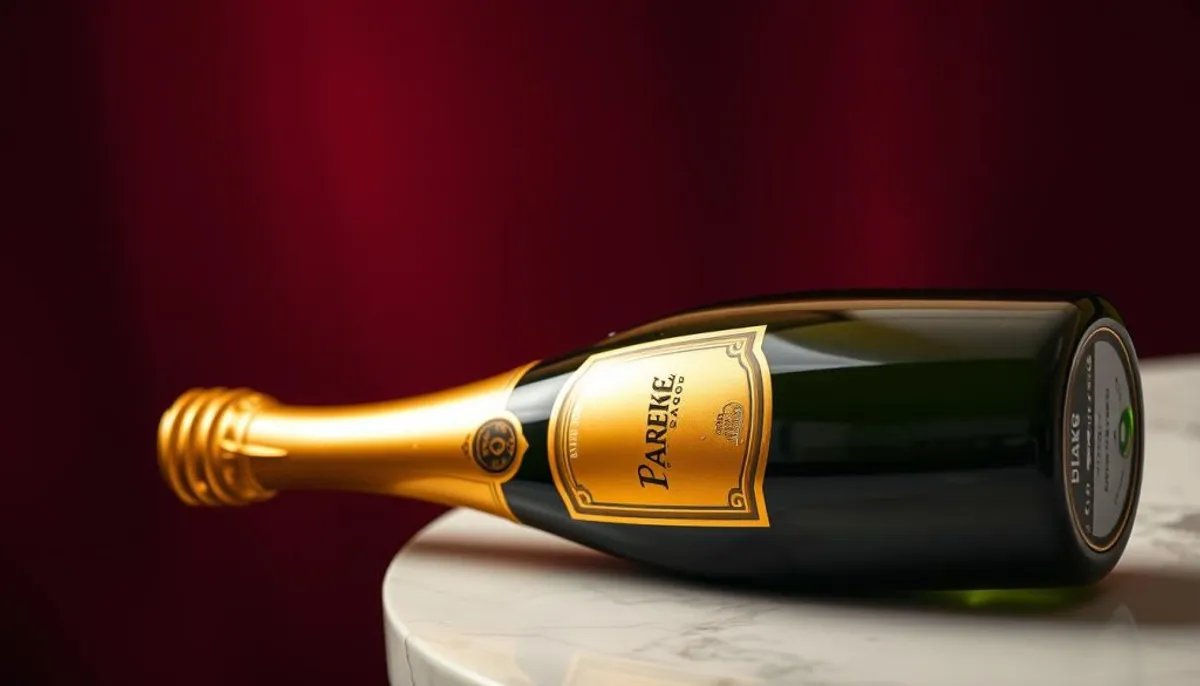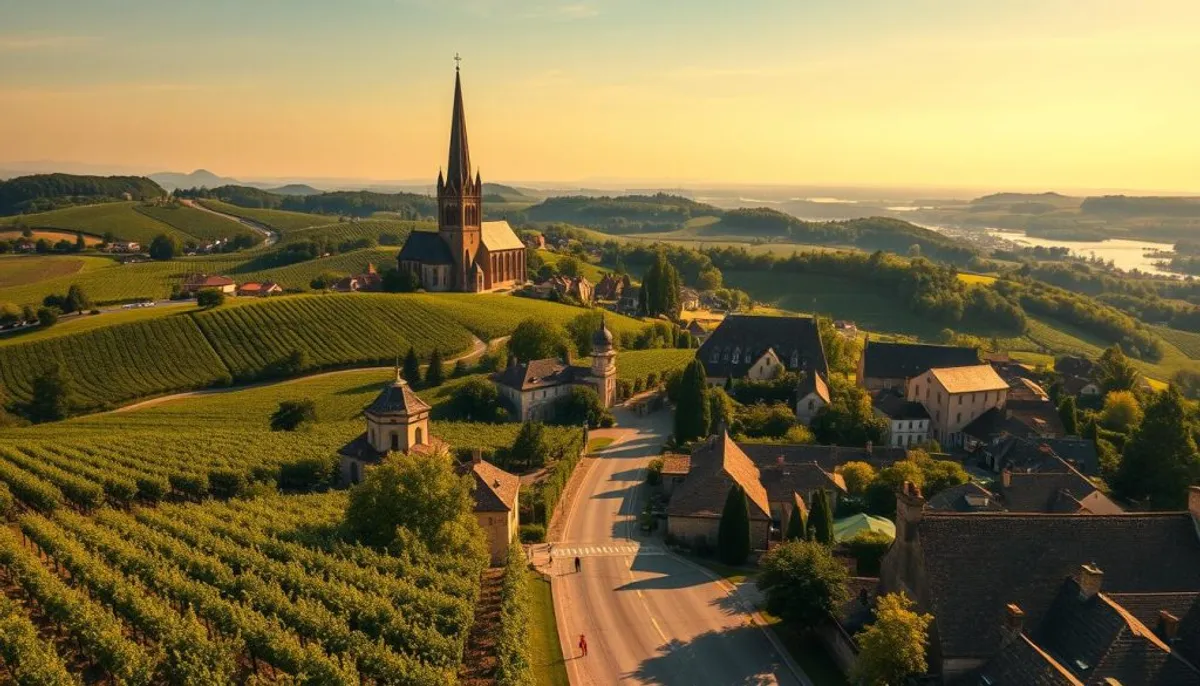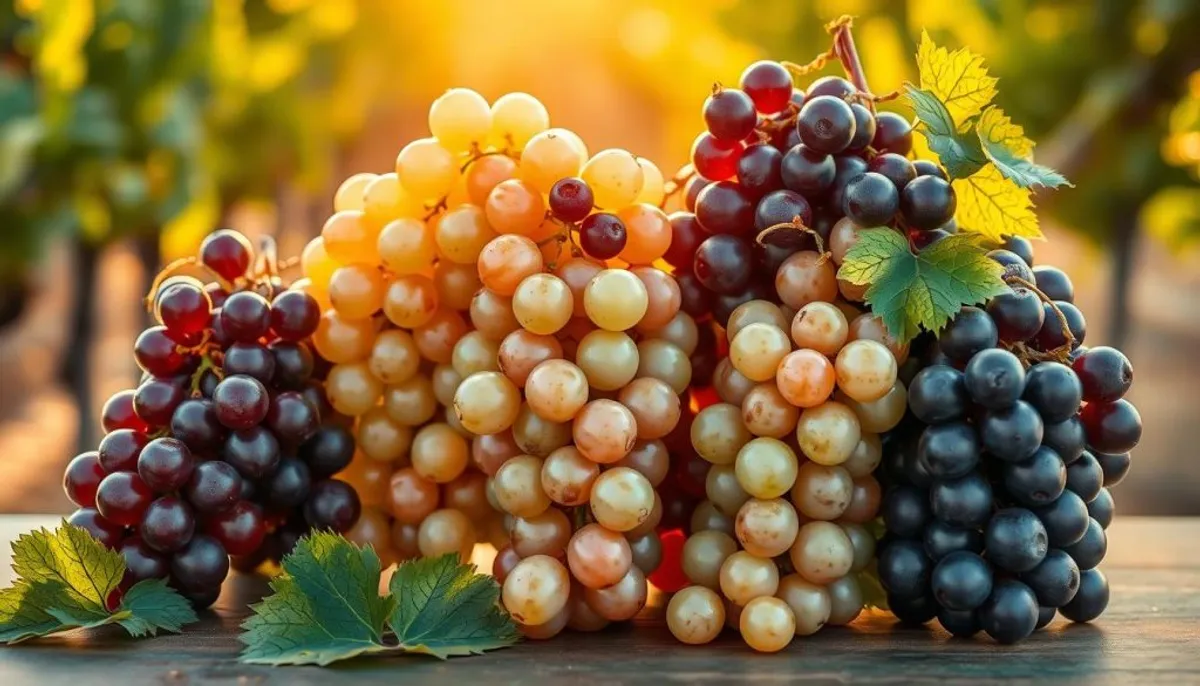Champagne, a term synonymous with celebration and opulence, conceals a profound significance beyond its effervescent essence. The inquiry into “champagne co nghia la gi” in French, or “what does champagne mean,” uncovers a tapestry of history and rigorous production standards.
Champagne transcends its status as merely sparkling wine. It embodies a prestigious drink, attainable only from the Champagne region of France. This legal safeguard ensures that every bottle of Champagne embodies centuries of tradition and mastery, including the renowned sâm-panh pháp.

The essence of Champagne extends beyond its effervescence. It embodies a harmonious fusion of art and science, where winemakers meticulously blend each bottle with specific grape varieties and a distinctive double fermentation process. This traditional method imparts Champagne with its unique flavor profile and the coveted tiny, dancing bubbles we cherish.
Key Takeaways
- Champagne is exclusively from the Champagne region of France
- It’s made using the traditional method of double fermentation
- The term “Champagne” is legally protected
- Champagne represents centuries of winemaking tradition
- It’s more than just sparkling wine – it’s a symbol of celebration
Understanding Champagne: A Noble Legacy
Champagne transcends its effervescence, embodying a legacy steeped in French nobility. Its origins are rooted in the 17th century, marking it as a paragon of opulence and festivity. This heritage underscores its status as a quintessential celebratory drink, making champagne region travel a journey into the heart of this luxurious tradition.
Defining True Champagne
Authentic Champagne originates exclusively from the Champagne region of France. This criterion is paramount, ensuring the wine’s excellence and genuineness. The region’s unique terroir and climate are instrumental in crafting Champagne’s distinctive flavor profile.
Protected Status
The appellation “Champagne” is safeguarded by law. Only wines produced within the Champagne region are entitled to this designation. This legal framework is crucial, maintaining the integrity and tradition of genuine Champagne.
French Cultural Icon
In the French cultural lexicon, Champagne occupies a revered position. It is a staple at significant gatherings and milestones, embodying French sophistication and artistry. The effervescent nature of Champagne has evolved into a universal emblem of jubilation and triumph.
| Aspect | Significance |
|---|---|
| Origin | Champagne region, France |
| Legal Status | Protected Designation of Origin |
| Cultural Role | Symbol of celebration and luxury |
The Rich History of Champagne Region
The khu vuc san xuat champagne is steeped in a history that spans centuries. Wine production in this region traces back to Roman times, with vineyards evident as early as the 5th century. The area’s unique climate and soil composition proved ideal for grape cultivation, setting the stage for one of the world’s most revered wine regions.
From Roman Times to Modern Day
Throughout the Middle Ages, the Champagne region’s wines rose in popularity among nobility and clergy. By the 17th century, it solidified its reputation as a premier wine-producing area. The evolution of Champagne making techniques over time has shaped the iconic sparkling wine we know today.

Dom Pérignon’s Contribution
Dom Pérignon, a Benedictine monk, was instrumental in the development of Champagne. In the late 17th century, he introduced several innovations that significantly improved the quality and consistency of Champagne production. His contributions included blending grapes from different vineyards and perfecting the art of creating clear white wines from red grapes. Understanding the types of grapes in champagne is crucial to appreciating the depth of flavors and styles that Champagne can offer.
Evolution of Champagne Making
The process of making Champagne has undergone significant evolution over time. Early versions were often cloudy and unpredictable. The development of the méthode champenoise in the 19th century revolutionized production, creating the crisp, bubbly wine we enjoy today. This method, unique to the region, is a key factor in answering the question “cham pagne la gi?” – it’s a sparkling wine produced using specific techniques in a designated area of France.
| Era | Key Development |
|---|---|
| Roman Times | Establishment of vineyards |
| Middle Ages | Increasing popularity among nobility |
| 17th Century | Dom Pérignon’s innovations |
| 19th Century | Introduction of méthode champenoise |
The Science Behind Champagne Production
The process of making Champagne is a testament to the art of winemaking. At its core is the méthode champenoise, a traditional method that imbues Champagne with its distinctive effervescence. This method involves two critical fermentations, converting still wine into the bubbly beverage we cherish.
The initial fermentation transforms grape juice into wine. Yeast consumes sugars, producing alcohol and carbon dioxide. The second fermentation occurs in the bottle. Here, a blend of sugar and yeast, known as the liqueur de tirage, is added to the still wine. This initiates another fermentation cycle, but this time, the CO2 is trapped. It dissolves into the wine, creating the iconic bubbles we associate with Champagne.
The role of yeast extends beyond fermentation. As it dies, it settles at the bottle’s bottom, forming lees. These lees contribute to the wine’s complexity during aging. The longer the wine ages on lees, the more profound its flavors become.
Temperature control is paramount in the production of Champagne. Cool cellars facilitate slow fermentation, allowing for the gradual maturation of flavors. Equally critical is pressure management. The bottles must endure up to 6 atmospheres of pressure, a force equivalent to three times that of a car tire.
Grasping the intricacies of Champagne production enhances our appreciation for the craftsmanship behind each bottle. It showcases a harmonious blend of chemistry, biology, and artistry, resulting in the world’s most revered sparkling wine.
Champagne co nghia la gi: Essential Characteristics
Champagne co nghia la gi, or “what does Champagne mean,” encapsulates the essence of this iconic beverage. Its production process and adherence to quality standards are unparalleled. This sparkling wine is a testament to centuries of tradition and meticulous craftsmanship.
Traditional Method (Méthode Champenoise)
The Méthode Champenoise stands as the cornerstone of Champagne production. This intricate process involves a second fermentation within the bottle, crafting the wine’s distinctive bubbles. This ancient technique distinguishes Champagne from other sparkling wines, making it a true marvel of winemaking.
Unique Production Requirements
Champagne production is governed by stringent rules. Grapes must originate from specific areas within the Champagne region. Each bottle must age for a minimum of 15 months for non-vintage and 36 months for vintage Champagnes. These standards guarantee the wine’s exceptional quality and unique character.
Quality Control Standards
The Comité Interprofessionnel du vin de Champagne (CIVC) enforces stringent quality control measures. Every phase, from grape selection to bottling, is meticulously monitored. This dedication to excellence is what elevates Champagne to its esteemed status, ensuring consistent quality.
| Characteristic | Requirement |
|---|---|
| Bottle Volume | 750ml to 1.5 liters |
| Production Capacity | 300,000 pieces daily |
| Quality Certifications | FDA, EU, SGS, ISO 9001 |
Grasping the concept of champagne co nghia la gi requires an understanding of its fundamental characteristics. From the traditional method to the rigorous production and quality control standards, Champagne embodies luxury and sophistication in the realm of wine. Additionally, participating in champagne tasting tours offers enthusiasts a unique opportunity to explore the nuances of this exquisite beverage.
The Geography of Champagne Making
The khu vuc san xuat champagne, or Champagne production area, is pivotal in crafting this renowned sparkling wine. The nguon goc champagne, or origin of Champagne, is deeply embedded in its distinctive geography. This geography significantly contributes to its unique character and quality. In addition, the processes involved in sản xuất rượu sâm panh are crucial for maintaining the high standards associated with this prestigious beverage.
Climate and Terroir
Champagne’s climate is characterized as cool and continental, with average temperatures hovering around 50°F (10°C). This climate, paired with chalky soil, fosters ideal conditions for cultivating Champagne grapes. The concept of terroir, encompassing climate, soil, and topography, is fundamental in grasping why Champagne has its distinctive taste.
Designated Growing Areas
The Champagne region is segmented into five primary growing areas: Montagne de Reims, Vallée de la Marne, Côte des Blancs, Côte de Sézanne, and Aube. Each area boasts its own distinct features that shape the grapes grown there. For instance, Montagne de Reims is renowned for its Pinot Noir grapes, whereas Côte des Blancs is celebrated for Chardonnay.
Soil Composition Impact
The soil in the Champagne region predominantly consists of chalk and limestone. This composition ensures excellent drainage and reflects sunlight, aiding grape ripening in the cool climate. The soil also imparts a distinct mineral quality to the wine, enhancing Champagne’s signature taste profile.
Grasping the geography of the khu vuc san xuat champagne reveals why authentic Champagne can only originate from this specific region. The harmonious blend of climate, soil, and centuries-old winemaking traditions endows Champagne with its unmatched character and prestige.
Primary Grape Varieties Used in Champagne
The production of champagne hinges on three primary grape varieties. Each contributes distinct characteristics to the final product. Let’s dive into these grapes that define champagne’s unique essence.

Pinot Noir is the cornerstone of many champagnes. This red grape imparts a robust structure and body. It introduces fruity undertones reminiscent of cherries and strawberries. Chardonnay, on the other hand, brings a touch of elegance and finesse. It enriches the wine with citrus and floral notes, alongside a refreshing acidity. Pinot Meunier completes the blend, offering a burst of freshness and fruitiness.
Winemakers meticulously blend these grapes in varying proportions. This technique allows for the creation of diverse champagne styles. Some champagnes, like the Blanc de Blancs, are crafted solely from Chardonnay, resulting in a light and crisp wine. Others combine all three grapes for a more complex and balanced cuvée. The art of blending is crucial in crafting exceptional champagnes.
- Pinot Noir: Body, structure, red fruit notes
- Chardonnay: Elegance, citrus, floral aromas
- Pinot Meunier: Freshness, fruitiness
Grasping the significance of these grape varieties deepens our appreciation for champagne and highlights the homemade pickles benefits that come from understanding the craftsmanship behind each bottle of this revered sparkling wine.
Champagne Styles and Classifications
Champagne, a cherished beverage, presents itself in diverse styles, catering to a wide array of palates. Grasping these classifications is crucial, as it clarifies the question “cham pagne la gi” and deepens your appreciation for this effervescent wine.
Sweetness Levels Explained
Champagne spans a spectrum from bone dry to sweet. The spectrum includes:
- Brut Nature: Bone dry
- Extra Brut: Very dry
- Brut: Dry
- Extra Dry: Slightly sweet
- Sec: Noticeably sweet
- Demi-Sec: Sweet
- Doux: Very sweet
Vintage vs Non-Vintage
Vintage Champagne is crafted from grapes of a single harvest year. In contrast, non-vintage blends grapes from multiple years. Vintage Champagnes are rarer and typically command a higher price tag.
Color Classifications
Champagne is categorized into three primary hues:
- Blanc de Blancs: Made from white grapes
- Blanc de Noirs: Made from red grapes
- Rosé: Pink Champagne
Each style boasts a distinct flavor profile, rendering Champagne a versatile choice for myriad occasions. Familiarity with these classifications empowers you to select the ideal bottle, aligning with your personal taste preferences.
Conclusion: The Enduring Appeal of Champagne
Champagne epitomizes the pinnacle of winemaking, its significance deeply embedded in French heritage and history. Originating in the Champagne region, it has transcended its local roots to gain international acclaim. The intricate method of its production distinguishes it from other sparkling wines.
The unique terroir of Champagne, coupled with rigorous production standards, guarantees each bottle captures its essence. The combination of Chardonnay, Pinot Noir, and Pinot Meunier grapes crafts a balanced flavor profile, beloved by connoisseurs. Whether it’s a vintage or non-vintage, brut or demi-sec, each type of champagne offers a unique experience.
For those eager to dive into the world of champagne, high-quality options are available for export worldwide. Visit https://champagne-export.com to request a personalized quote and explore a range of fine champagnes ready for delivery. Embrace the effervescence and rich tradition that each bottle of champagne embodies, and toast to this timeless symbol of celebration and elegance.
RelatedRelated articles



